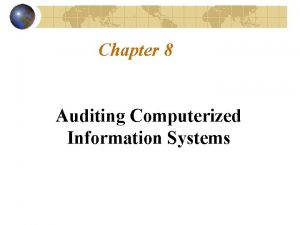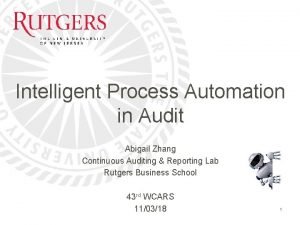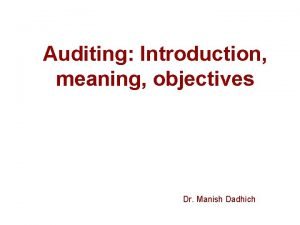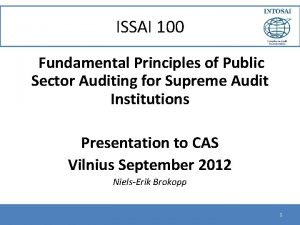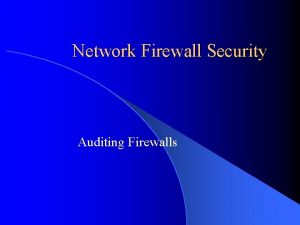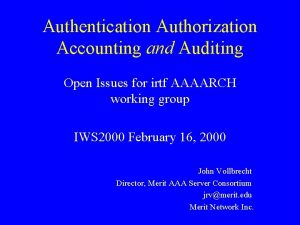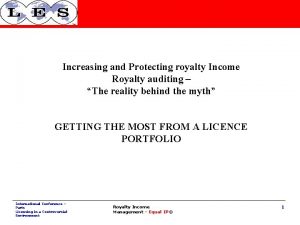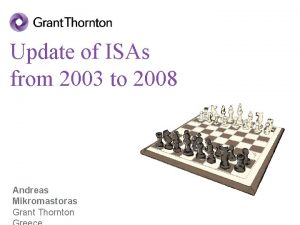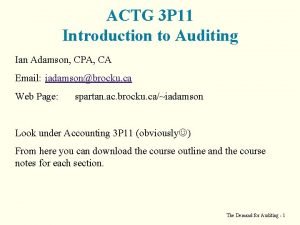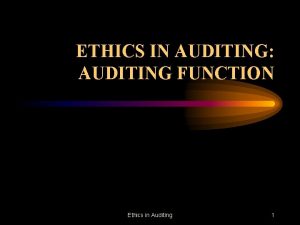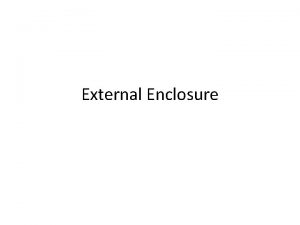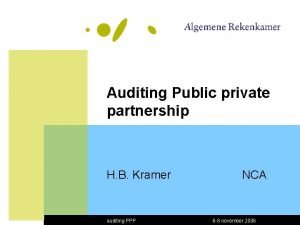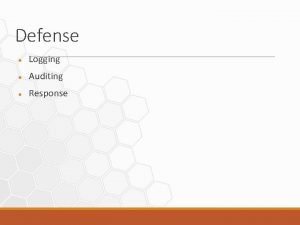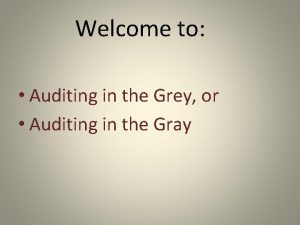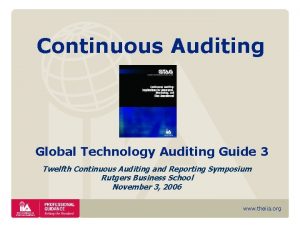ACTG 4 P 61 External Auditing I Ian













- Slides: 13

ACTG 4 P 61 External Auditing I Ian Adamson, CPA, CA Email: iadamson@brocku. ca Web Page: spartan. ac. brocku. ca/~iadamson Look under Accounting 4 P 61 (obviously ) From here you can download the course outline and the course notes for each section.

Introduction to Actg 4 P 61 CAS 200 – Overall objectives of the independent auditor, and the conduct of an audit in accordance with Canadian auditing standards CAS 300 – Planning an audit of financial statements Introduction 2

Key Points • Management assertions give rise to Audit Objectives • What type of tests? • Thus have • N. B. For each audit objective there must be an audit test Introduction 3

Management Assertions • Transaction (Events) – Occurrence – Completeness – Accuracy – Cutoff – Classification Introduction 4

Management Assertions • Balances – Existence – Rights and Obligations (Ownership) – Completeness – Valuation and Allocation Introduction 5

Management Assertions • Presentation and Disclosure – Occurrence – Rights and Obligations (Ownership) – Completeness – Valuation and Allocation – Classification and Understandability Introduction 6

Transaction-Related Audit Objectives • Specifically for transactions or events • There are five audit objectives for transactions – Occurrence – Completeness – Accuracy – Posting and summarization – Classification – Timing (Cutoff) Introduction 7

Balance Related Audit Objectives • To see if a balance is fairly stated • Five objectives • Existence • Rights and Obligations (Ownership) • Completeness • Valuation • Allocation Introduction 8

Presentation & Disclosure Related Audit Objectives • Used to examine financial statements • Seven objectives • Occurrence • Rights and Obligations (Ownership) • Completeness • Accuracy • Valuation • Classification • Understandability Introduction 9

Examples • Asset Existence – The test • Inventory Completeness – The test • Sales Occurrence – The test • Sales timing – The test Introduction 10

Problem 5 -26, page 126 The following are two balance-related audit objectives in the audit of accounts payable. 1. All accounts payable included on the list represent amounts due to valid vendors. 2. There are no unrecorded accounts payable. The list referred to in the objectives is the aged accounts payable balance produced using the supplier master file. The total of the list equals the accounts payable balance on the general ledger. REQUIRED a) Explain the difference between theses two balance-related audit objectives b) For the audit of accounts payable, which of these two balance-related audit objectives would usually be more important? Explain. Introduction 11

Problem 5 -27, page 126 The following (1 through 17) are the balance-related, transaction-related, and presentation- and disclosurerelated audit objectives. Assertions About Classes of Transactions and Events Assertions About Account Balances Assertions About Presentation and Disclosure 1. Occurrence 6. Existence 11. Occurrence and 7. Rights and Obligations 12. Rights and Obligations 8. Completeness 13. Completeness 2. Completeness 3. Accuracy 14. Accuracy and 9. Valuation and 15. Valuation 10. Allocation 4. Cutoff 5. Classification 16. Classification 17. Understandability Introduction 12

Problem 5 -27, page 126 - continued REQUIRED Identify the audit object (1 through 17) of each of the following audit procedures for the audit of sales accounts receivable. , and cash receipts for the current fiscal year. a) Examine a sample of duplicate sales invoices to determine whether each one has a shipping document attached. b) Add all customer balances in the accounts receivable trial balance and agree the account to the general ledger. c) For a sample of sales transactions selected from the sales journal, verify that the amount of the transaction has been recorded in the correct customer account in the accounts receivable total field of the customer master file. d) Inquire of the client whether any accounts receivable balances have been pledged as collateral on long-term debt and determine whether all required information is included in the footnote description for long-term debt. e) For a sample of shipping documents selected from shipping records, trace each shipping document to a transaction recorded in the sales journal. f) Discus with credit department personnel the likelihood of collection of all accounts with a balance greater then $100, 000 and greater than 90 days old as of the year-end. g) Examine sales invoices for the last five sales transactions recorded in the sales journal in the current year and examine shipping documents to determine that they are recorded in the correct period. h) For a sample of customer accounts receivable balances at the year-end, examine subsequent cash receipts in the following month to determine whether the customer paid the balance due. i) Determine whether all risks related to accounts receivable are adequately disclosed. j) Foot the sales journal for the month of July (hallway through the fiscal year and trace posting to the general ledger. k) Send letters to a sample of accounts receivable customers to verify whether they have an outstanding balance at the fiscal year-end. l) Determine whether long-term receivables and related party receivables are reported separately in the financial statements. Introduction 13
 Actg 2p12
Actg 2p12 How do auditing standards differ from auditing procedures
How do auditing standards differ from auditing procedures Auditing computer based information system
Auditing computer based information system External-external trips
External-external trips Intelligent process automation in audit
Intelligent process automation in audit Objectives of auditing
Objectives of auditing Isai 100
Isai 100 Noise auditing
Noise auditing Auditing firewalls
Auditing firewalls Authentication authorization auditing
Authentication authorization auditing Ruang lingkup auditing
Ruang lingkup auditing Royalty audit definition
Royalty audit definition Finance and investment cycle
Finance and investment cycle International standard on auditing 240
International standard on auditing 240


